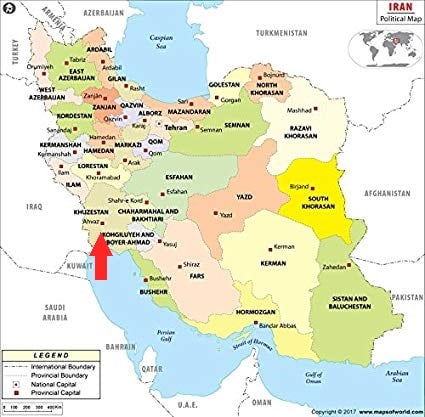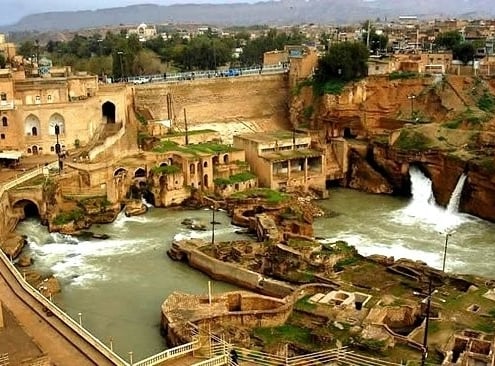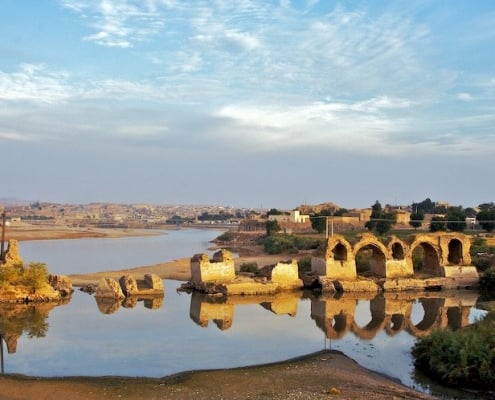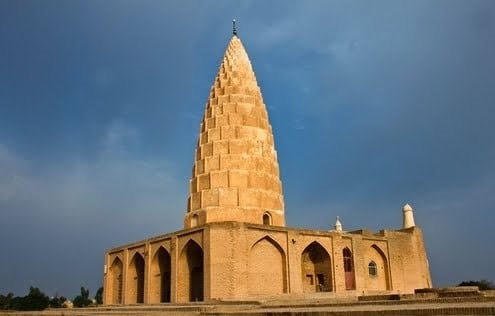Khuzestan
Khuzestan
Khuzestan Province capital is Ahvaz and it covers an area of 63,238 km2.
The seat of the province has for the most of its history been in the northern reaches of the land, first at Shush and then at Shushtar. During a short spell in the Sasanian era, the capital of the province was moved to its geographical center, where the river town of Hormuz-Ardasher, founded over the foundation of the ancient Hoorpahir by Ardashir I, the founder of the Sasanian Dynasty in the 3rd century CE. This town is now known as Ahvaz. However, later in the Sasanian time and throughout the Islamic era, the provincial seat returned and stayed at Shushtar, until the late Qajar period. With the increase in the international sea commerce arriving on the shores of Khuzistan, Ahvaz became a more suitable location for the provincial capital.
Khuzestan is known for its ethnic diversity; the population of Khuzestan consists of Lurs, Iranian Arabs, Qashqai people, Afshar tribe, indigenous Persians and Iranian Armenians. Khuzestan’s population is predominantly Shia Muslim, but there are small Christian, Jewish, Sunni and Mandean minorities. Half of Khuzestan’s population is Bakhtiari.
Shushtar
Shushtar is an ancient fortress city, approximately 92 kilometers away from Ahvaz, the centre of the province. The Shushtari dialect is spoken in Shushtar and is a dialect of Persian.
Shushtar has a hot semi-arid climate with extremely hot summers and mild winters. Rainfall is higher than most of southern Iran, but is almost exclusively confined to the period from November to April.
Shushtar Historical Hydraulic System is a complex irrigation system of the island city Shushtar from the Sassanid era. It was registered on UNESCO‘s list of World Heritage Sites in 2009 and is Iran’s 10th cultural heritage site to be registered on the United Nations‘ list.
The Band-e Kaisar is believed by some to be a Roman built arch bridge and the first in the country to combine it with a dam. When the Sassanian Shah Shapur I defeated the Roman emperor Valerian, he is said to have ordered the captive Roman soldiers to build a large bridge and dam stretching over 500 meters. Lying deep in Persian territory, the structure which exhibits typical Roman building techniques became the most eastern Roman Bridge and Roman dam. Its dual-purpose design exerted a profound influence on Iranian civil engineering and was instrumental in developing Sassanid water management techniques.
Shush
Shush is a city and capital of Shush County, Khuzestan Province, Iran. Its population was 53,897 in 2006. Shush is located beside ancient Susa.
Shush sights are:
- The Tomb of Daniel is the traditional burial place of the biblical prophet Daniel.
- Shush Castle is located in the ruins of the ancient city of Susa in the Khuzestan Province of Iran.
- The Palace of Darius in Susa was a palace complex in Susa, Iran, a capital of the Achaemenid Empire.
Tomb of Daniel
Khorramshahr
Khorramshahr is a city in Khuzestan Province, Iran. Its population was 123,866 in 2006.
Khorramshahr is an inland port city located approximately 10 kilometers north of Abadan. The city extends to the right bank of the Arvand Rud.
Abadan
Abadan is located in the southwest of Iran. The island is bounded in the west by the Arvand waterway and to the east by the Bahmanshir outlet of the Karun River 53 kilometers from the Persian Gulf, near the Iran–Iraq border.
The climate in Abadan is arid and similar to Baghdad’s, but slightly hotter due to Abadan’s lower latitude. Summers are dry and extremely hot, with temperatures above 45 °C. Winters are mildly wet and spring-like, though subject to cold spells. Winter temperatures are around 16–20 °C.







